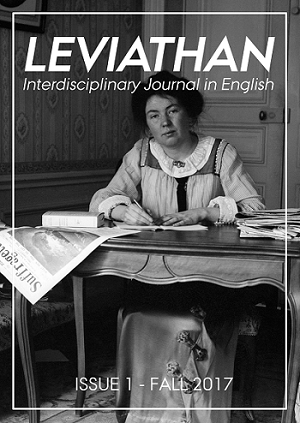“Mother! Where are you?”: Attachment, Hazard-precaution and Loss Simulation in Bambi and Finding Nemo (BA Project)
DOI:
https://doi.org/10.7146/lev.v0i1.96786Keywords:
Disney, attachment, foreign threats, evolutionary theory, theory of mind, children’s films, feminism, Human Nature and Pop CultureAbstract
This BA project analyses Disney’s animated feature films Bambi (Alger, et al. 1942) and Finding Nemo (Stanton and Unkrich 2003) from an evolutionary perspective, exploring the adaptive mechanisms that underpin them. The heroes of Disney’s childhood favorites often must survive horrifying threats and traumatic losses. Through the lenses of attachment theory, children’s danger management, and evolutionary film theory, this paper argues that Bambi and Nemo’s cute and fragile appearances and loving relationships with their parents activate children’s biological urge for parental protection. The characters encounter threats that human children are adapted to avoid, but small children endure these scenes because they offer indirect experience with real-life fitness-threatening scenarios. Finally, while evolutionary theory and feminist theory are frequently considered at odds, I discuss how these two approaches in combination can explore the untraditional family patterns in Finding Nemo.References
Alexander, Kristin J., Peggy J. Miller, and Julia A. Hengst. 2001. ”Young Children’s Emotional Attachment to Stories.” Social Development 10 (3): 374-398. doi:10.1111/1467-9507.00171.
Algar, James, et al. 1942. Bambi. Walt Disney Productions. DVD.
Anderson, Marla V., and Antonia J. Z. Henderson. 2005. “Pernicious Portrayals: The Impact of Children’s Attachment to Animals of Fiction on Animals of Fact.” Society & Animals 13 (4): 297-314. doi:10.1163/156853005774653645.
Barrett, Clark H. 2005. “Adaptations to Predators and Prey.” in The Handbook of Evolutionary Psychology, ed. David M. Buss, 200-223. Hoboken: John Wiley & Sons.
Blaise, Aaron, and Robert Walker. 2003. Brother Bear. Walt Disney Productions. DVD.
Bowlby, John. 1970. “Disruption of Affectional Bonds and its Effect on Behavior.” Journal of Contemporary Psychotherapy 2 (2): 75-86. doi:10.1007/BF02118173.
Boyer, Pascal, and Pierre Liénard. 2006. “Why Ritualized Behavior? Precaution Systems and Action Parsing in Developmental, Pathological and Cultural Rituals.” Behavioral and Brain Sciences 29 (6): 595-650.doi: 10.1017/S0140525X06009332.
Bretherton, Inge. 1992. “The Origins of Attachment Theory: John Bowlby and Mary Ainsworth.” Developmental Psychology 28 (5): 759-775. doi:10.1037/0012-1649.28.5.759.
Brydon, Suzan G. 2008. “Men at the Heart of Mothering: Finding Mother in Finding Nemo.” Journal of Gender Studies 18 (2): 131-146. doi:10.1080/09589230902812448.
Buck, Chris, and Kevin Lima. 1999. Tarzan. Walt Disney Productions. DVD.
Buss, David M., and David P. Schmitt. 2011. “Evolutionary Psychology and Feminism.” Sex Roles 64 (9): 768-787. doi:10.1007/s11199-011-9987-3.
Buss, David M. 2016. Evolutionary Psychology. 5th edition. New York: Routledge.
Carroll, Joseph. 2006. “The Human Revolution and the Adaptive Function of Literature.” Philosophy and Literature 30 (1): 33-49. doi:10.1353/phl.2006.0005.
---. 2012. “The Truth About Fiction: Biological Reality and Imaginary Lives.” Style 46 (2): 129-160. ProQuest, http://search.proquest.com/docview/1242453597?accountid=14468 (accessed 8/12 2016).
Clements, Ron, and John Musker. 1989. The Little Mermaid. Walt Disney Productions. DVD.
Dutton, Denis. 2009. The Art Instinct. New York: Bloomsbury Press.
Franzblau, Susan H. 2002. “Deconstructing Attachment Theory: Naturalizing the Politics of Motherhood.” In Charting a New Course for Feminist Psychology, ed. Lynn H. Collins, Michelle R Dunlap, and Joan C. Chrisler, 93-110. Westport: Praeger Publishers.
Gottschall, Jonathan. 2013. The Storytelling Animal: How Stories Make Us Human. 2nd edition. New York: Mariner Books.
Holmes, Jeremy. 2014. John Bowlby and Attachment Theory. 2nd edition. New York: Routledge.
Grodal, Torben. 2007a. “Bio-Culturalism: Evolution and Film.” In Narration and Spectatorship in Moving Images, 16-28. Newcastle: Cambridge Scholars Publishing.
---. 2007b. “Pain, Sadness, Aggression, and Joy: An Evolutionary Approach to Film Emotions.” Projections 1 (1): 91-107. doi:10:3167/proj.2007.010107.
---. 2009. Embodied Visions. New York: Oxford University Press.
Hastings, A. Waller. 1996. “Bambi and the Hunting Ethos.” Journal of Popular Film & Television 24 (2): 53-59. doi:10.1080/01956051.1996.9943714.
Holcomb, Jeanne, Kenzie Latham, and Daniel Fernandez-Baca. 2015. “Who Cares for the Kids? Caregiving and Parenting in Disney Films.” Journal of Family Issues 36 (14): 1957-1981. doi:10.1177/0192513X13511250.
King, Margaret J. 1996. ”The Audience in the Wilderness: The Disney Nature Films.” Journal of Popular Film & Television 24 (2): 60-68. doi:10.1080/01956051.1996.9943715.
Payne, David. 1995. “Bambi.” In From Mouse to Mermaid, ed. Elizabeth Bell, Lynda Hass, and Laura Sells, 137-147. Bloomington: Indiana University Press.
Saad, Gad. 2012. “Nothing in Popular Culture Makes Sense Except in the Light of Evolution.” Review of General Psychology 16 (2):109-120. doi: 10.1037/a0027906.
Stanton, Andrew, and Lee Unkrich. 2003. Finding Nemo. Walt Disney Productions. DVD.
Trousdale, Gary, and Kirk Wise. 1991. Beauty and the Beast. Walt Disney Productions. DVD.
Whitley, David. 2014 “The Wild and the Cute: Disney Animation and Environmental Awareness.” In Kidding Around: The Child in Film and Media, ed. Alexander N. Howe and Wynn Yarbrough, 211-222. New York: Bloomsbury Press. Bloomsbury Collections e-book. doi:10.5040/9781628929928.
Downloads
Published
How to Cite
Issue
Section
License
Attribution-NonCommercial-NoDerivatives 4.0 International (CC BY-NC-ND 4.0)
You are free to share (copy and redistribute the material in any medium or format).
However:
You may not use the material for commercial purposes.
You must give appropriate credit, provide a link to the license, and indicate if changes were made. You may do so in any reasonable manner, but not in any way that suggests the licensor endorses you or your use.
If you remix, transform, or build upon the material, you may not distribute the modified material.
You may not apply legal terms or technological measures that legally restrict others from doing anything the license permits.





